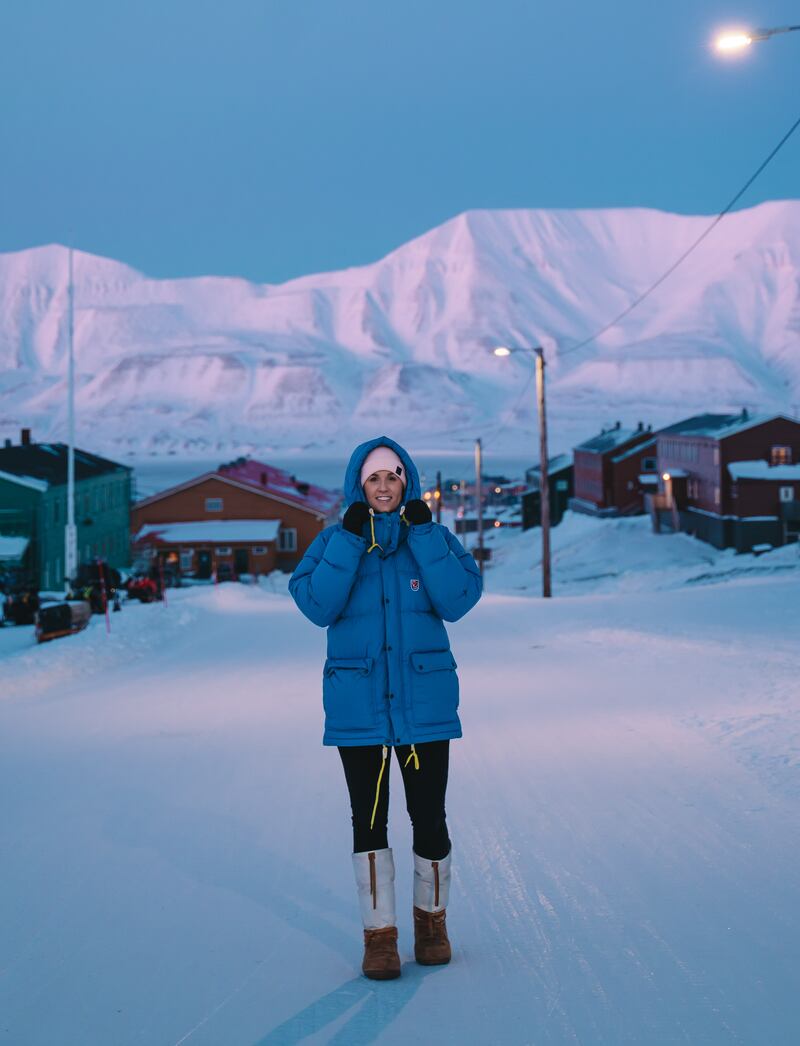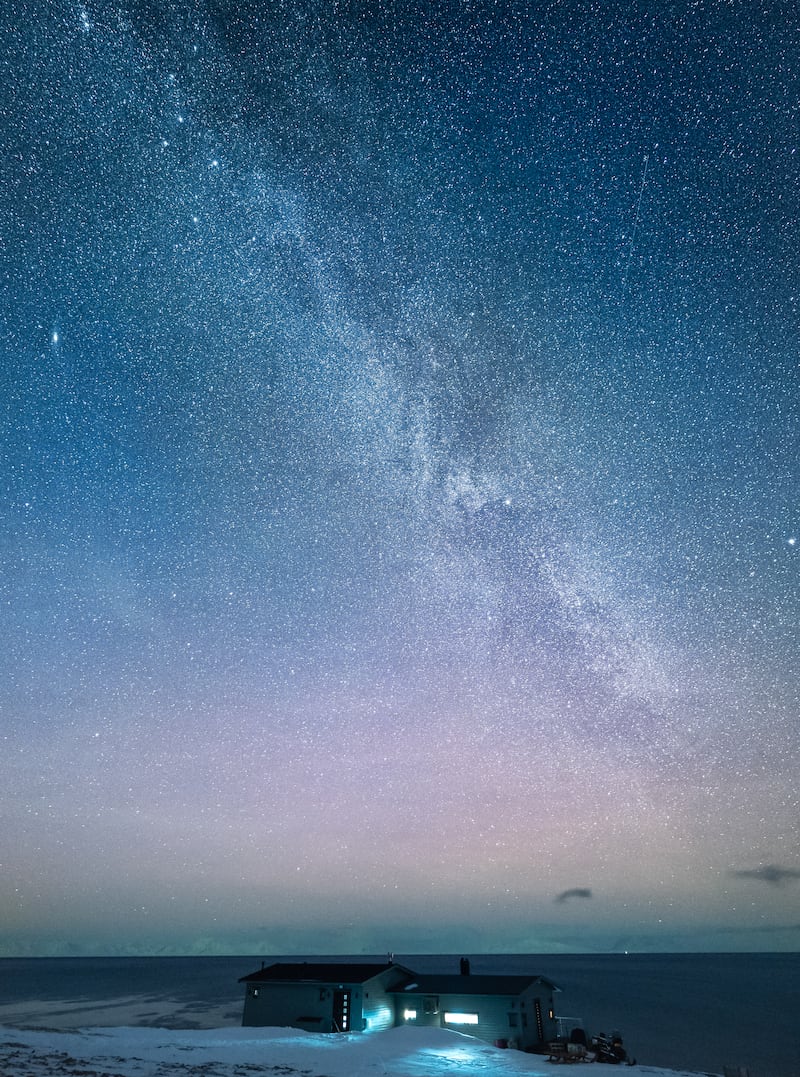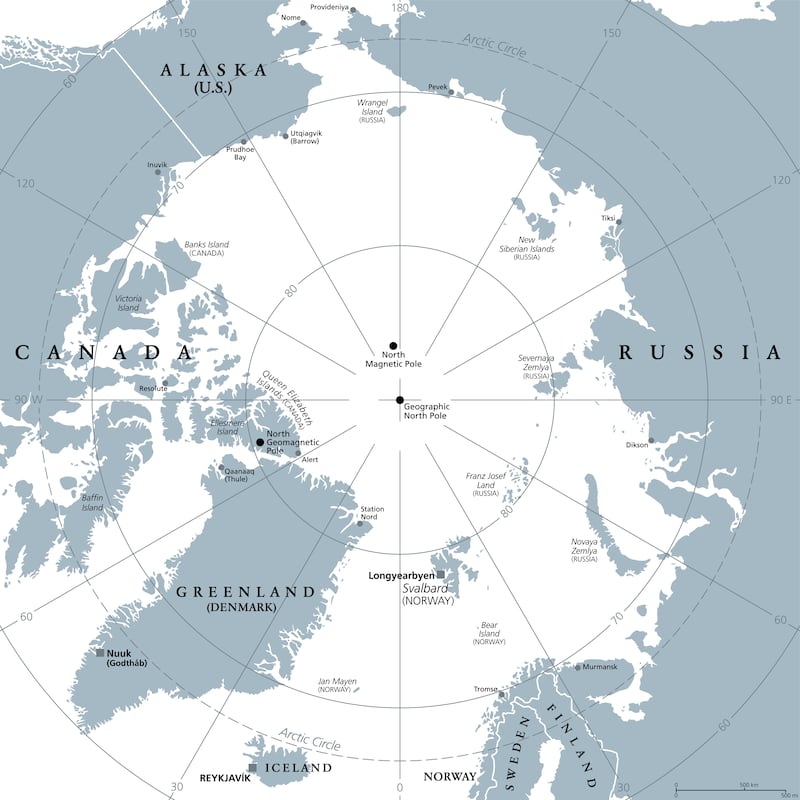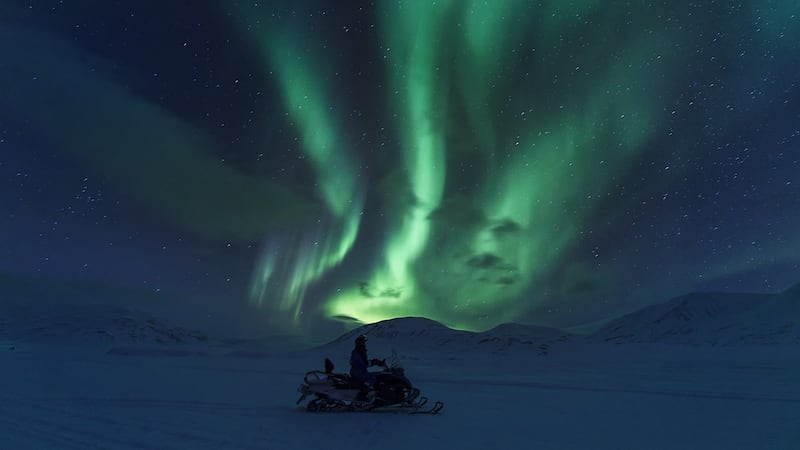In her classic memoir, A Woman in the Polar Night, first published in 1938, Christiane Ritter leaves her daughter behind in Austria to spend a year on an island in the Svalbard archipelago in a hut with her husband.
She later said that “a year in the Arctic should be compulsory to everyone… Then you will come to realise what’s important in life and what isn’t.”
For Cecilia Blomdahl, a one-year sojourn on the Norwegian archipelago has turned into eight, as she has become bewitched by the magic and splendour of a life lived in the northernmost town in the world, Longyearbyen, on the island of Spitsbergen, just 400 miles from the North Pole.
It’s a world away from her childhood years in Dublin.
READ MORE
Blomdahl grew up in Sweden, “where we have dark and cold winters”, but her family moved to Sandycove in south Dublin when she was about 11 due to her father’s work. They stayed there for almost three years, with Blomdahl attending St Andrew’s College.
“Our whole family agrees on our time in Ireland to be some of the best years of our lives,” she recalls.
So does life in the polar night remind her at all of the dark, damp days in Dublin?
“I don’t think the Irish winter has any similarities with the one here on Svalbard,” she laughs. “I remember Irish winter to be a wet kind of cold that goes into your bones with small amounts of snow, and the cold here on Svalbard is a very dry one with a lot more snow.”
She first moved to the Norwegian archipelago in the Arctic Ocean in 2015, with a plan of staying for just three months.
But, like Ritter before her, “the peaceful life and gorgeous nature made me fall in love with Svalbard”.

Now she lives in a cabin close to the sea with her boyfriend Christoffer and her dog Grim, and the extreme climate is one of the reasons she loves it there.
As elsewhere, the climate is slowly changing: a recent publication from the Copernicus Climate Change Service noted that the largest temperature increases have been observed during winter, but summer temperatures are also on the rise, leading to increased glacier melt.
Polar night continues from mid-November to end-January, and is followed by “sunny winter”, where light returns but temperatures remain low.
“It is exciting and offers up a different way of life. The long polar night means endless opportunities of Northern Lights, and clear, star-filled skies. I love the polar night for all the cosiness that it brings.”


Adjusting to 24 hours of darkness can be difficult on the body, however.
“I always try to keep a strict sleep schedule during the darker months, as there is nothing to tell your body when to go to sleep or wake up. I have a wake-up light that wakes me up with a “sunrise” in the morning, which I find helps. Since I am a bit of a late sleeper, I do find it difficult to get up in the morning, the further we get into the polar night season. By January, I have often completely lost my circadian rhythm and end up going to bed late and getting up late,” she says.
Of course, the other side of the rhythm of 24 hours of darkness is that the summer – typically from the end of April to the end of August – brings four months of constant sunlight.
But which would she choose – all-day day or all-night night?
“I prefer how the polar night makes me feel and the calm it brings me,” she says. “But I think both seasons have so much beauty, and offer up so many different but exciting adventures.”
While incredibly beautiful, the frozen mountainside also poses some risks – Ritter’s book refers to locations such as Misery Bay, Distress Hook and Comfortless Cove.
Although it’s illegal to seek out a polar bear in order to shoot it – after such incidents there is a full investigation to determine what in fact happened – residents of Longyearbyen have to bring with them a gun or a “scaring” device such as a flare gun or signal pen when departing from town limits, in case they are attacked by one.

Blomdahl brings a gun with her when out walking, but has never had to use it.
It is this dichotomy – a regular person living a somewhat regular life in such an unusual place – that she thinks appeals to her million or so social media followers. In a town of just more than 2,000 people, finding a livelihood can be difficult, but Blomdahl has drawn on her love of the location to build up a significant following as a content creator (she is found @sejsejlija on Instagram).
“I may carry a rifle on my dog walks with Grim, but I also go get my nails done once a month,” she says.
The island is remote; it’s a one-and-a-half hour flight from Tromso, Norway, with flights every other day or so during polar night. From here, it’s another two hours or so to Oslo, the Norwegian capital. Most things, such as Christmas trees, have to be imported, as there are no trees on the island, and while the island has many important facilities such as restaurants, hotels and bars, you won’t be calling on Deliveroo or a late-night grocery delivery.
So what happens if you run out of milk on a Friday night when the local shop isn’t open?
“The only way to get milk would be to write on our community Facebook page and ask a local in town if they have some,” says Blomdahl. “I can say with 99 per cent certainty that someone will answer saying that they can pick some up from their home – we have a very lovely and helping community.”


Seeing the Northern Lights is a big attraction in the area – Ritter described them as being like “gleaming rods of glass”, “in radiant lilacs, greens, and pinks, swinging and whirling around their own axis in a wild dance”. Blomdahl regularly features them on her social media channels – so, how often do they typically appear?
“During the polar night it can be at any time, or not at all for a week. You never know – it’s the beauty of the magical aurora,” she says.
Despite all the beauty, however, the darkness of the days can start to get in on a person living there.
“I personally like to go on a trip in January as to break up darkness and regain some daily rhythm,” says Blomdahl, who is just back from a holiday in Miami, Florida.
On such trips she takes advantage of the food options on offer, noting that a lack of variety is one thing she misses on the island.
Despite the harsh weather – average temperatures are as low as -20c in January – Blomdahl heads out on walks with her dog Grim most days, in almost any weather.
“I just gear up with the right clothing. Puffy coats, wool thermals, etc. I think if you live like this, you get used to just going with the flow. I find harsh weather to be quite exciting, as long as I am in a safe situation,” she says.
And if you’re thinking of a trip to the north?
“Research the season well before visiting,” says Blomdahl. “Each season here on Svalbard offers up different experiences and options, and if you come in a month where nothing of what you want to do is available, you might not get to see any of what you want.”
But don’t expect to access the full experience of the polar north on a short break. As Ritter wrote: “The Arctic does not yield its secret for the price of a ship’s ticket. You must live through the long night, the storms, and the destruction of human pride. You must have gazed on the deadness of all things to grasp their livingness.”
- Sign up for push alerts and have the best news, analysis and comment delivered directly to your phone
- Find The Irish Times on WhatsApp and stay up to date
- Our In The News podcast is now published daily – Find the latest episode here


















